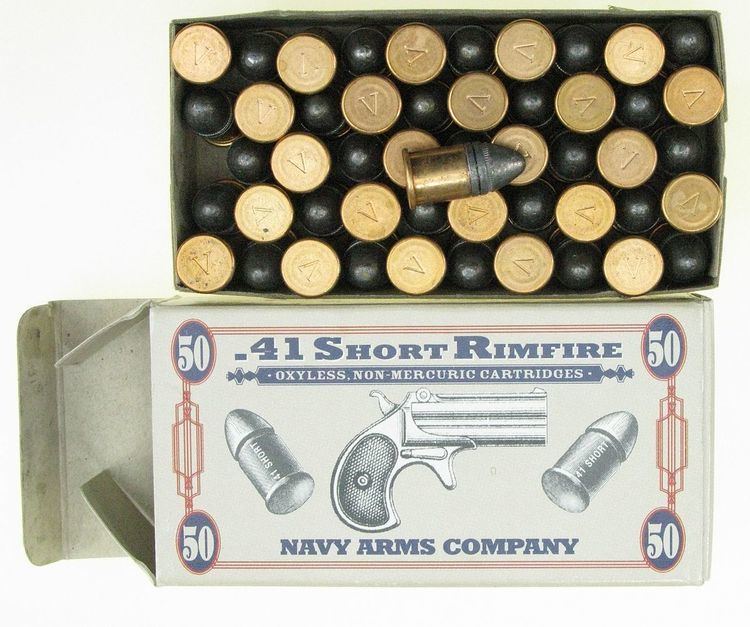Type Derringer / Handgun Case type Rimfire, straight | Designed 1863 | |
 | ||
Variants .41-100, .41 Short Derringer, .41 Rimfire, .41 Long | ||
The .41 Rimfire Cartridge was first introduced by the National Arms Company in 1863 and was also known as the .41 Short and the .41-100. In most designations like this, the second number refers to the black powder load, though in this case it means "41 hundredths of an inch".
The .41 Short was created with the intention that it be used in a small, single-shot derringer, which likely is the reason for the very low ballistics (most derringers were and are chambered for cartridges that were not originally intended to be used in such a small weapon). Remington Arms began producing their famous Remington Model 95 over/under double barrel derringer chambered for the .41 Rimfire cartridge in 1866.
In 1873 the slightly more powerful .41 Long was introduced in the Colt New Line pocket revolver.
Performance
According to Cartridges of the World, the .41 Rimfire consisted of a 130 grain (8.4 g) lead bullet propelled by 13 grains (0.8 g) of black powder in its original load. The round produced a muzzle velocity of 425 feet per second (130 m/s) and a muzzle energy of 52 foot-pounds force (71 J). However, more recently firearms writer Holt Bodinson has disputed these findings. He states that his testing showed the 130 grain bullet traveled at 685 feet per second (209 m/s) so producing 111 foot-pounds force (150 J) of energy - a significant difference in ballistic energy from the earlier tests. The difference in findings can potentially be attributed to variances in the specific ammunition fired or measuring equipment used.
